What Makes Burrata Special
Burrata is a fresh Italian cheese that’s capturing hearts (and taste buds) around the world. It looks like regular mozzarella on the outside, but cut it open and you’ll find a creamy, dreamy center that oozes like the yolk of a perfectly poached egg. Curious food historians can explore the cheese’s full back-story on the Burrata Wikipedia page.
Quick Facts About Burrata:
- Origin: Apulia region of Italy (specifically Andria)
- Composition: Mozzarella shell filled with stracciatella (cream and cheese curds)
- Taste: Rich, buttery, and milky with subtle sweetness
- Best eaten: Within 1–2 days of production
- Texture: Firm exterior, flowing creamy interior
This isn’t just another cheese – it’s what happens when Italian cheesemakers turn leftovers into luxury. Originally created in the early 1900s as a clever way to use up mozzarella scraps, burrata has evolved from a practical solution to a premium delicacy that graces restaurant menus from New York City to Milan.
The magic lies in its contrast. While the outer shell provides structure and mild flavor, the interior delivers pure indulgence. When you break into that “cute dairy purse” (as one cheese expert puts it), the stracciatella flows out “like cold cream lava” – creating an experience that’s part cheese, part sauce, and entirely unforgettable.
Whether you’re planning your next culinary trip or simply want to lift your home cooking, understanding burrata opens up a world of possibilities. From classic Caprese salads to modern fusion dishes, this cheese bridges traditional Italian craftsmanship with contemporary dining trends.
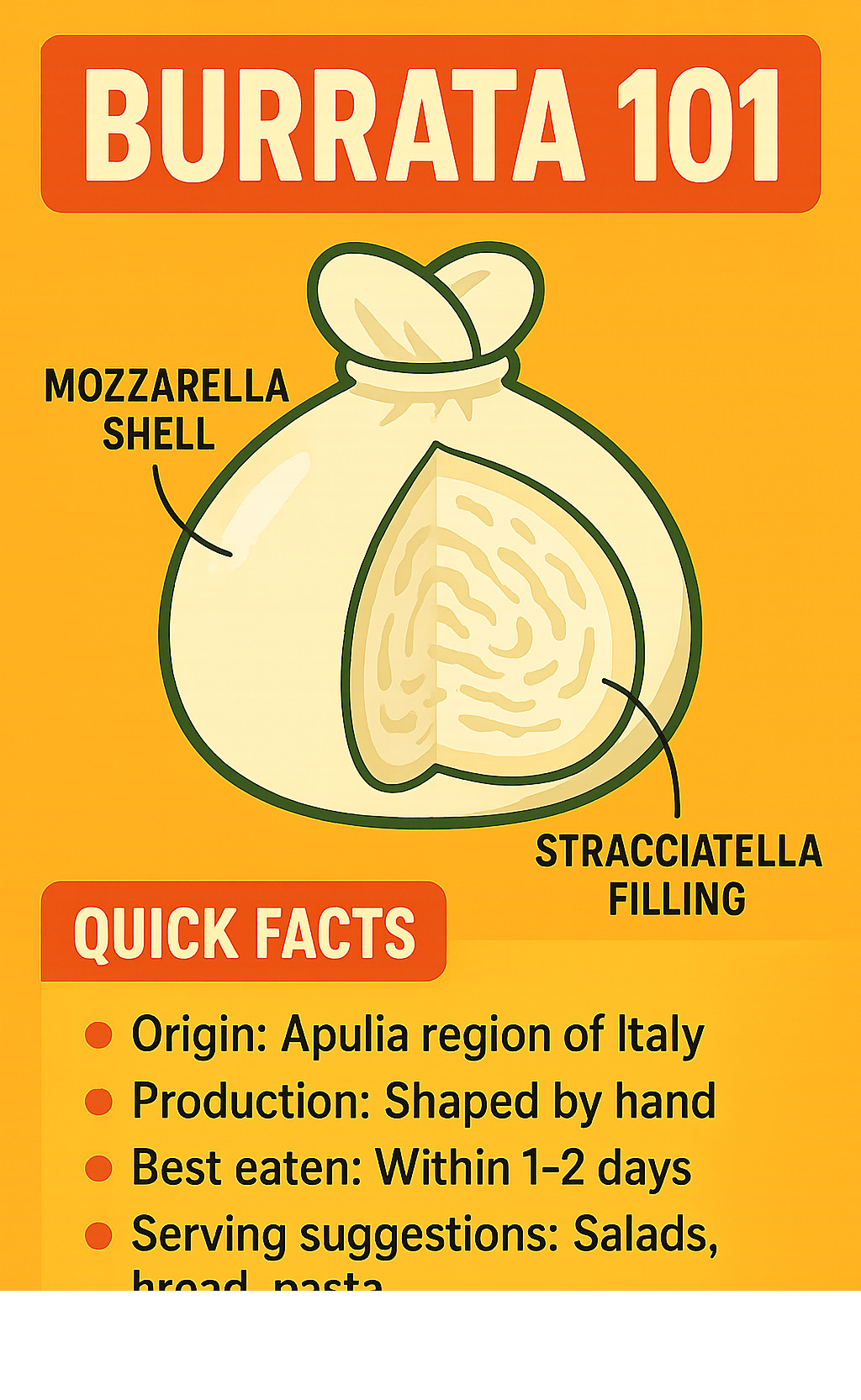
Burrata terms to know:
What Is Burrata?
Imagine cutting into what looks like an ordinary ball of mozzarella, only to find a river of cream flowing out like liquid gold. That’s burrata – the Italian cheese that turns every meal into a moment of pure indulgence.
Burrata is a fresh cow’s milk cheese that’s essentially a edible surprise package. The name comes from “burro,” the Italian word for butter, which gives you a pretty good hint about what you’re in for. This isn’t your everyday cheese – it’s what happens when Italian cheesemakers decided that regular mozzarella needed a creamy upgrade.
The magic lies in its unique construction. The outer shell is made from stretched mozzarella, creating a natural pouch that holds the real treasure inside: stracciatella. This filling combines fresh cheese curds with rich cream, creating a texture that’s part cheese, part sauce, and entirely unforgettable.
Most burrata balls weigh between 4 ounces and just over 2 pounds, though you’ll typically find 200-250g portions in stores. With about 56% moisture and 24% milk fat, this cheese is significantly richer than regular mozzarella – and you’ll taste every bit of that richness.
History & Origin of Burrata
Every great cheese has a story, and burrata’s tale is pure Italian ingenuity at its finest. Picture this: it’s the early 1900s in Andria, a charming town in Italy’s Apulia region. Local farmers and cheesemakers were dealing with a common problem – what to do with leftover mozzarella scraps and excess cream that would spoil quickly.
Enter Lorenzo Bianchino, the brilliant mind credited with perfecting burrata in the 1950s. Though some legends tell of farmers creating this cheese during snowstorms, the real story is about turning waste into something wonderful. Those mozzarella scraps (called “ritagli”) became the perfect wrapper for preserving cream, creating a cheese that was both practical and absolutely delicious.
What started as a clever solution to food waste became something much more special. Burrata represents the heart of Italian food culture – taking simple, quality ingredients and changing them through skill and creativity.
In 2016, the European Union recognized Burrata di Andria with Protected Geographical Indication (PGI) status. This means that only burrata made in the traditional way in the Apulia region can carry this prestigious designation. It’s like a guarantee that you’re getting the real deal, made with centuries of tradition behind it.
Burrata vs. Mozzarella: Key Differences
While burrata and mozzarella are definitely related, they’re like cousins with very different personalities. Both start with similar techniques, but the end results offer completely different experiences.
The most obvious difference is structure. Mozzarella is solid throughout – what you see is what you get. Burrata, on the other hand, is all about the surprise. That firm exterior gives way to a flowing, creamy center that transforms the moment you cut into it.
| Aspect | Burrata | Mozzarella |
|---|---|---|
| Structure | Hollow pouch filled with cream and curds | Solid throughout |
| Fat Content | Higher (24% milk fat) | Lower (varies by type) |
| Texture | Firm exterior, flowing interior | Uniform, bouncy texture |
| Flavor | Rich, buttery, creamy | Mild, milky, clean |
| Serving | Best at room temperature | Good cold or warm |
| Shelf Life | 1-2 days optimal | 3-5 days typical |
The flavor difference is just as striking. Mozzarella offers a clean, mild taste that plays well with other ingredients. Burrata brings richness and butteriness that can transform a simple dish into something restaurant-worthy. Think of mozzarella as the reliable friend who’s always there for you, while burrata is the glamorous friend who makes every gathering feel special.
There’s also the matter of timing. While mozzarella gives you a few days to use it up, burrata is best enjoyed within a day or two of purchase. That short window just adds to its appeal – it’s fresh, it’s special, and it won’t wait around forever.
How Burrata Is Made, Bought & Stored
The art of making burrata is like watching a master craftsperson at work – equal parts technique, timing, and intuition. Understanding this process helps explain why authentic burrata commands premium prices and why it’s so wonderfully perishable.
Step-by-Step Production
Creating burrata follows the traditional pasta filata (stretched curd) technique, a method that’s been perfected over generations of Italian cheesemakers.
The journey begins with fresh cow’s milk being gently heated and treated with rennet and cultures to form curds. These curds need time to develop just the right acidity and texture – rush this step, and the final cheese suffers.
Next comes the magic: the curds are dropped into a hot whey bath, changing them from firm chunks into something pliable and stretchy. Skilled cheesemakers then stretch and knead the hot curd by hand until it becomes smooth and elastic, almost like working with edible clay.
Here’s where burrata becomes truly special. The stretched curd is carefully shaped into a pouch, then filled with stracciatella – those delightful torn mozzarella pieces swimming in fresh cream. The opening gets twisted and sealed to create that characteristic topknot we all recognize.
Traditionally, the finished burrata is wrapped in asphodel leaves or tied with raffia, both practical and beautiful touches that honor the cheese’s rustic origins. The entire process relies on the cheesemaker’s experienced touch – they judge doneness by feel alone, ensuring each ball achieves that perfect balance of firm exterior and flowing interior.
Shopping & Handling Tips
Finding quality burrata is like treasure hunting – you need to know where to look and what clues to follow.
Your best bet is often a local cheese shop or specialty Italian market, where the staff understands proper handling and turnover. High-end grocery stores with dedicated cheese sections can also be goldmines, especially if they work directly with importers or local producers.
When examining burrata, look for PGI certification if you’re seeking authentic Italian varieties. The packaging should contain some whey or brine – this isn’t a flaw, it’s actually a good sign that the cheese is properly stored. Check the production date religiously, since fresher always means better with this delicate cheese.
Trust your nose and eyes too. Avoid any burrata with off odors or discoloration, and if it’s wrapped in leaves, they should look green and fresh, not brown or wilted.
Here’s a crucial tip from cheese experts: handle burrata like you would a water balloon filled with cream – because that’s essentially what it is. Many enthusiastic food lovers learn this lesson the hard way after experiencing what one expert colorfully describes as “a burrata explosion in your hands.”
For deeper insights into why sourcing matters so much, our guide on Why Locally Sourced Ingredients Make a Difference explains how quality sourcing directly impacts flavor and overall experience.
Keeping Burrata Fresh
Burrata lives fast and dies young – it’s best enjoyed within 1-2 days of production, making it one of the most perishable cheeses you’ll encounter. But with proper care, you can maximize its brief but glorious lifespan.
Keep unopened burrata in its original packaging and liquid, stored in the coldest part of your refrigerator (usually toward the back). Once opened, transfer it to an airtight container and keep it submerged in whey, brine, or even a light coating of olive oil to prevent the surface from drying out.
Whatever you do, never freeze burrata – it completely destroys the delicate texture that makes this cheese so special. The cream separates, the mozzarella becomes rubbery, and you’re left with something that barely resembles the original masterpiece.
When you’re ready to serve, remove the burrata from refrigeration about 25-30 minutes beforehand. This allows it to come to room temperature, where the flavors bloom and the cream flows with that perfect, gentle consistency. You’ll know it’s ready when cutting into it releases a slow, luxurious stream of cream rather than a cold, thick glob.
Once you cut into burrata, consume it immediately. This isn’t the time for leftovers – it’s the time for pure, indulgent enjoyment of one of Italy’s most treasured culinary gifts.
Serving, Pairing & Cooking with Burrata
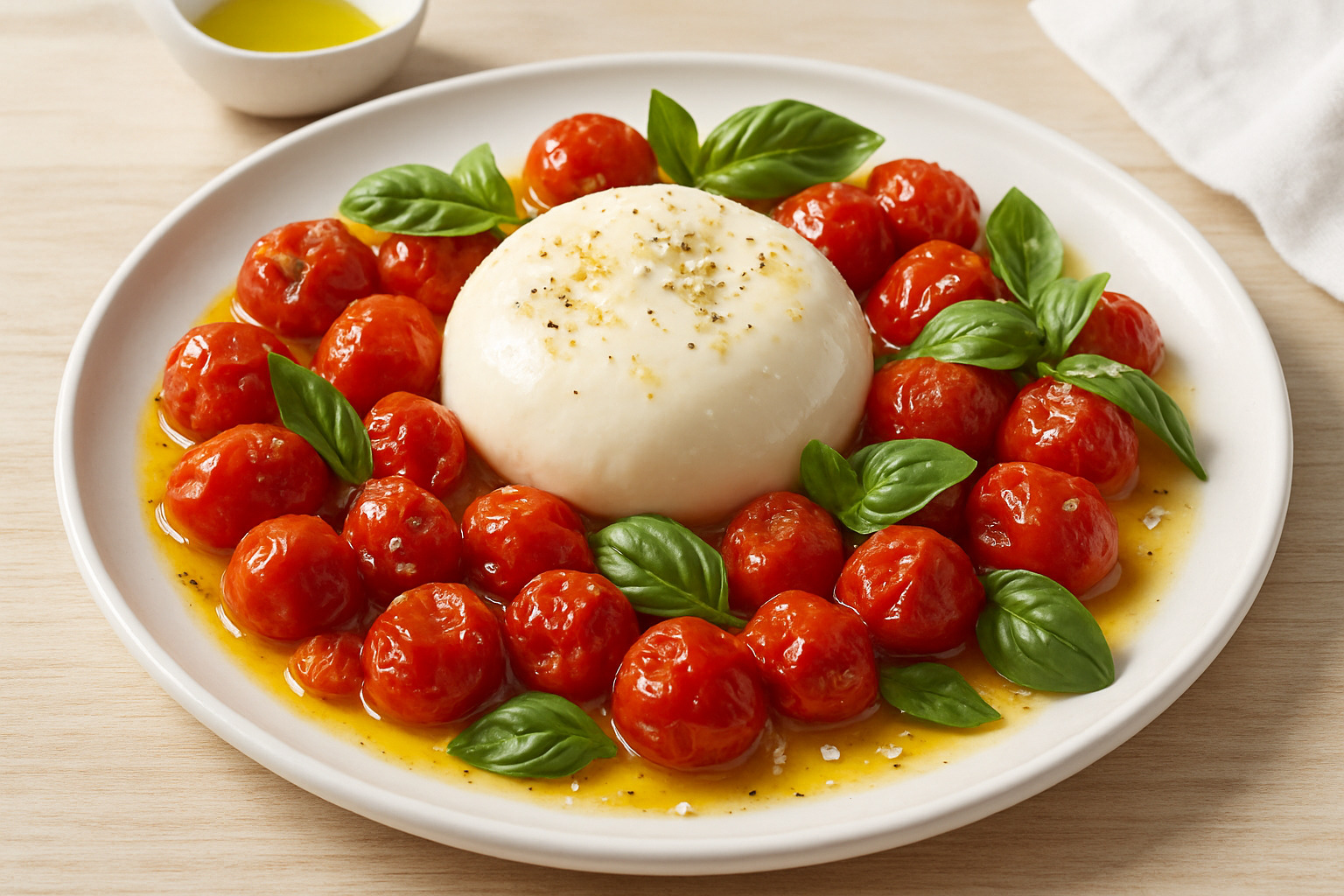
Burrata shines brightest when treated with respect and paired thoughtfully. The key is to let its natural creaminess be the star while supporting it with complementary flavors and textures.
Classic & Creative Ways to Eat Burrata
Traditional Preparations:
- Simple Perfection: Drizzle with extra virgin olive oil, sprinkle with sea salt flakes, and serve with crusty bread
- Caprese Liftd: Replace regular mozzarella in Caprese salad for an indulgent twist
- Pugliese Style: Serve with local taralli crackers and a glass of Italian wine
Modern Applications:
- Pizza Topping: Add burrata to pizza after baking to preserve its creamy texture
- Pasta Enrichment: Toss torn burrata into hot pasta for an instant cream sauce
- Fruit Pairings: Combine with seasonal stone fruits like peaches, nectarines, or figs
- Breakfast Luxury: Top avocado toast or serve alongside prosciutto for an liftd brunch
Creative Fusion:
- Asian-Inspired: Pair with soy-glazed vegetables and sesame oil
- Mexican Twist: Use in place of queso fresco with roasted corn and lime
- Middle Eastern: Combine with za’atar, olive oil, and warm flatbread
Must-Try Recipes & Inspiration
Bursty Tomato Burrata Salad (serves 4):
This recipe costs around $15 to make at home compared to $30+ at restaurants:
Ingredients:
- 2 balls of burrata (200g each)
- 500g cherry tomatoes
- 1 shallot, finely sliced
- 2 tbsp extra virgin olive oil (plus more for serving)
- 1 tbsp sherry vinegar
- Fresh basil leaves
- Sea salt flakes
- Crusty bread for serving
Method:
- Roast tomatoes and shallots with oil at 400°F for 10 minutes
- Add vinegar to the roasted tomatoes
- Gently place burrata on the warm tomatoes
- Drizzle with olive oil, sprinkle with salt and basil
- Serve immediately with bread
Stone Fruit Summer Platter:
Arrange torn burrata with grilled peaches, fresh mint, toasted pistachios, and a drizzle of honey. This combination offers the perfect balance of sweet, creamy, and crunchy textures.
For more recipe inspiration, explore our collection of Italian Restaurants Near Me to find how professional chefs are using burrata in innovative ways.
Beverage & Side Pairings
Wine Pairings:
- Light Whites: Pinot Grigio, Vermentino, or Falanghina complement without overwhelming
- Sparkling: Prosecco or Champagne provide acidic contrast to the richness
- Light Reds: Chianti Classico or Barbera d’Alba offer gentle tannins
Alternative Beverages:
- Craft Beer: Wheat beers or light lagers
- Non-Alcoholic: Sparkling water with lemon or herb-infused waters
- Cocktails: Light aperitifs like Aperol Spritz
Complementary Sides:
- Crusty sourdough or ciabatta bread
- Roasted vegetables with balsamic glaze
- Fresh arugula or mixed greens
- Cured meats like prosciutto or bresaola
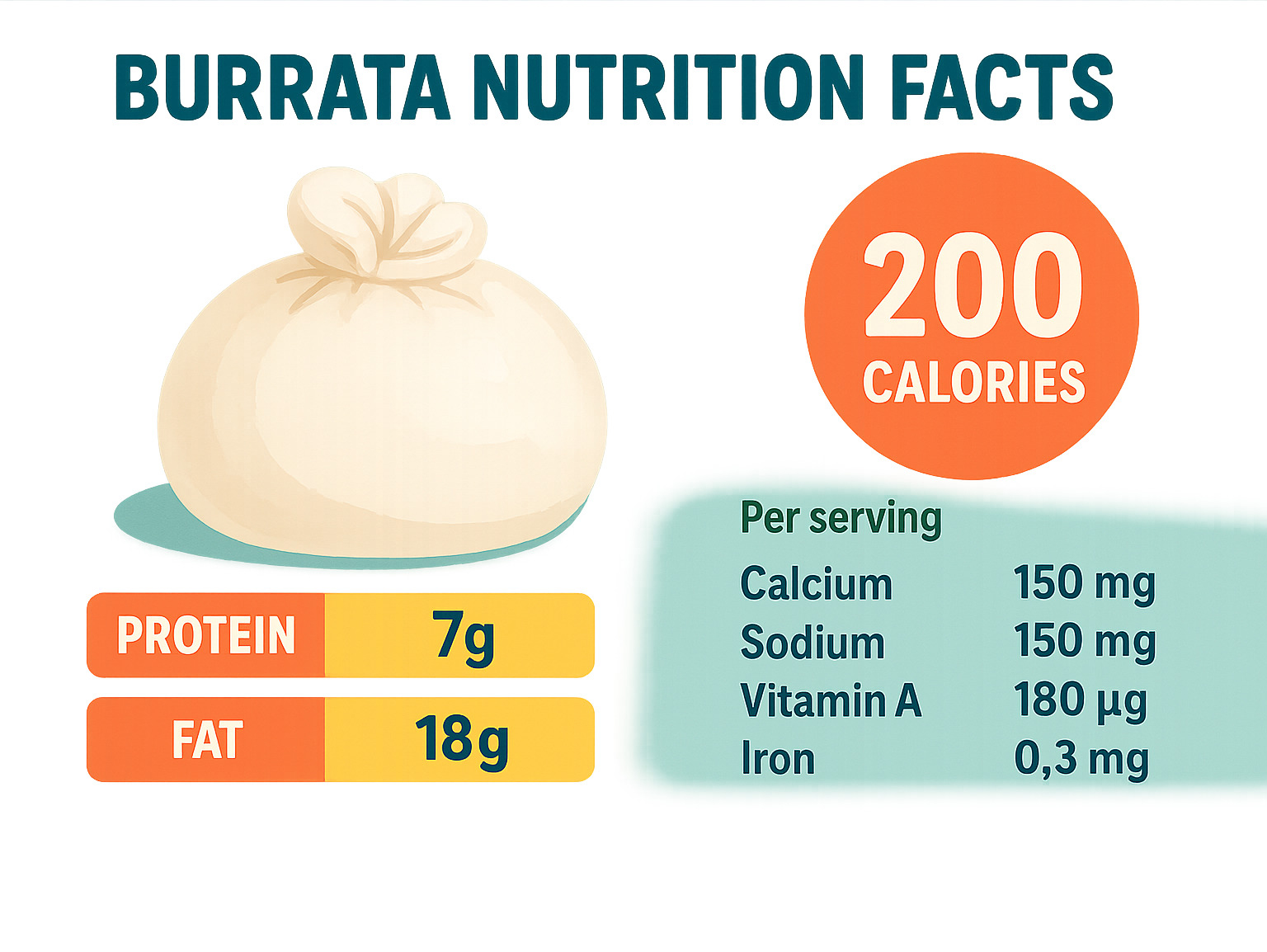
Nutrition, Substitutes & Dietary Notes
Understanding burrata’s nutritional profile helps you enjoy it mindfully as part of a balanced diet.
Burrata Nutrition Facts
Per 100g serving of burrata:
- Calories: Approximately 300-350 kcal
- Protein: 18-20g
- Fat: 25-30g (mostly saturated)
- Carbohydrates: 3-4g
- Moisture: 56%
- Milk Fat: 24%
A typical burrata salad serving (with tomatoes, olive oil, and bread) contains approximately:
- Calories: 305 kcal
- Protein: 11g
- Fat: 29g
Micronutrients:
- Calcium: Important for bone health
- Phosphorus: Supports energy metabolism
- Vitamin A: From the milk fat
- B Vitamins: Including B12 and riboflavin
Smart Swaps & Allergies
When You Can’t Find Burrata:
- Fresh Mozzarella: The closest substitute, though it lacks the creamy center
- DIY Stracciatella: Tear good mozzarella and mix with heavy cream
- Fior di Latte: Traditional cow’s milk mozzarella
- Ricotta: For a different but creamy texture in salads
Dietary Considerations:
- Lactose: Contains lactose, though less than aged cheeses
- Vegetarian: Check for vegetarian rennet if this matters to you
- Gluten-Free: Naturally gluten-free
- Vegan Alternatives: Some specialty shops offer cashew-based “burrata”
Allergy Notes:
Always check ingredients if you have dairy allergies. Some producers use different milk sources or processing aids.
For more information about dairy in your diet, consider reading about scientific research on dairy fat to make informed choices.
Frequently Asked Questions about Burrata
How long does burrata stay fresh after opening?
Burrata is best enjoyed the moment you open it – that’s when the magic truly happens. Once you cut into that creamy center, you’re racing against time. If you absolutely must save some for later (though we can’t imagine why you’d want to!), store it in an airtight container and keep it submerged in its original whey or add a light drizzle of olive oil.
Even with perfect storage, opened burrata will only last 3-5 days in the refrigerator. But here’s the thing – it won’t be half as good as when fresh. The cream starts to separate, the texture changes, and you lose that incredible flowing interior that makes burrata so special. Think of it like trying to save champagne bubbles for tomorrow – technically possible, but you’re missing the whole point.
Can I freeze burrata for later use?
Please don’t freeze your burrata – we’re begging you! Freezing is basically burrata’s kryptonite. The high moisture content and delicate cream structure mean that freezing will completely destroy everything that makes this cheese wonderful.
When you thaw frozen burrata, the cream separates into a watery mess, and that gorgeous flowing interior becomes grainy and unappetizing. You’ll end up with something that looks like cottage cheese had a bad day. Save your money and your taste buds – only buy burrata when you’re ready to eat it within a day or two.
What’s the easiest homemade substitute if I can’t find burrata?
Don’t panic if your local store is out of burrata – you can create a delicious substitute at home! The easiest approach is making your own stracciatella, which captures much of burrata’s creamy magic.
Simply tear high-quality fresh mozzarella into bite-sized pieces and gently mix them with heavy cream. Add a pinch of salt to taste, and you’ve got something that delivers similar flavors and textures. While it won’t have that dramatic “burrata moment” when you cut through the outer shell, it still gives you that rich, creamy experience.
Serve your homemade version exactly like you would real burrata – drizzled with good olive oil, sprinkled with sea salt, and accompanied by crusty bread or fresh tomatoes. Your guests might not know the difference, and you’ll still get to enjoy that luxurious, creamy indulgence that makes burrata so irresistible.
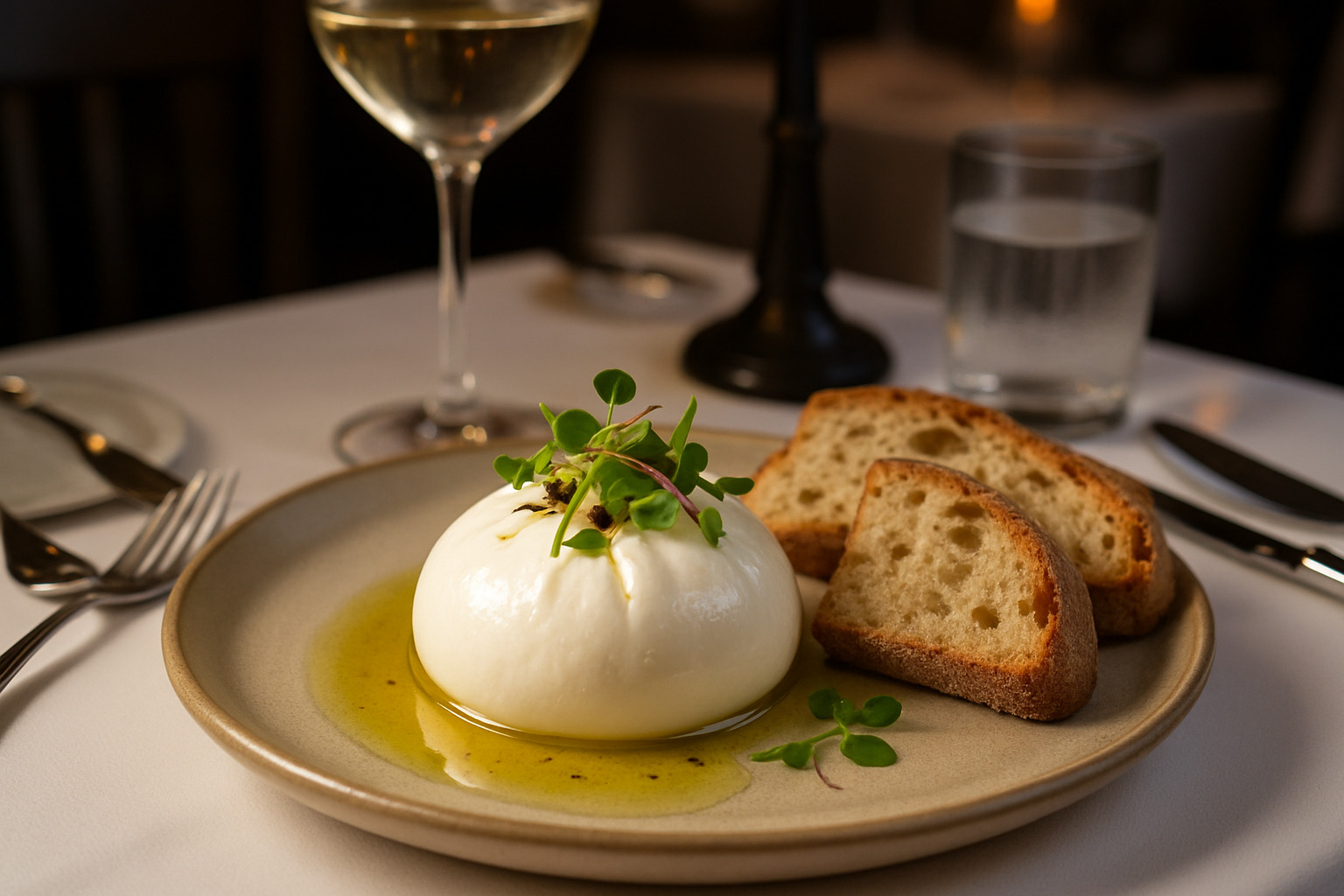
Conclusion
Burrata represents the beautiful intersection of Italian tradition and modern culinary innovation. From its humble beginnings as a way to use leftover mozzarella scraps to its current status as a restaurant darling, this cheese embodies the Italian philosophy of changing simple ingredients into something extraordinary.
Whether you’re enjoying it simply with good olive oil and bread, incorporating it into seasonal salads, or using it to lift your home cooking, burrata offers an experience that goes beyond mere sustenance. It’s a reminder that the best foods often come from resourcefulness, tradition, and respect for quality ingredients.
As you explore burrata, freshness is key, gentle handling is essential, and simplicity often yields the most satisfying results. This cheese doesn’t need elaborate preparation – it needs appreciation.
Ready to find more incredible culinary experiences? Explore our Best Culinary Experiences to find cheese-centric trips and food trips. At The Dining Destination, we’re your New York City hub for global food exploration, helping you find the stories, traditions, and flavors that make dining an trip worth taking.
From the rolling hills of Puglia to your dinner table, burrata continues to bring joy, indulgence, and a taste of Italian craftsmanship to food lovers worldwide. Buon appetito!

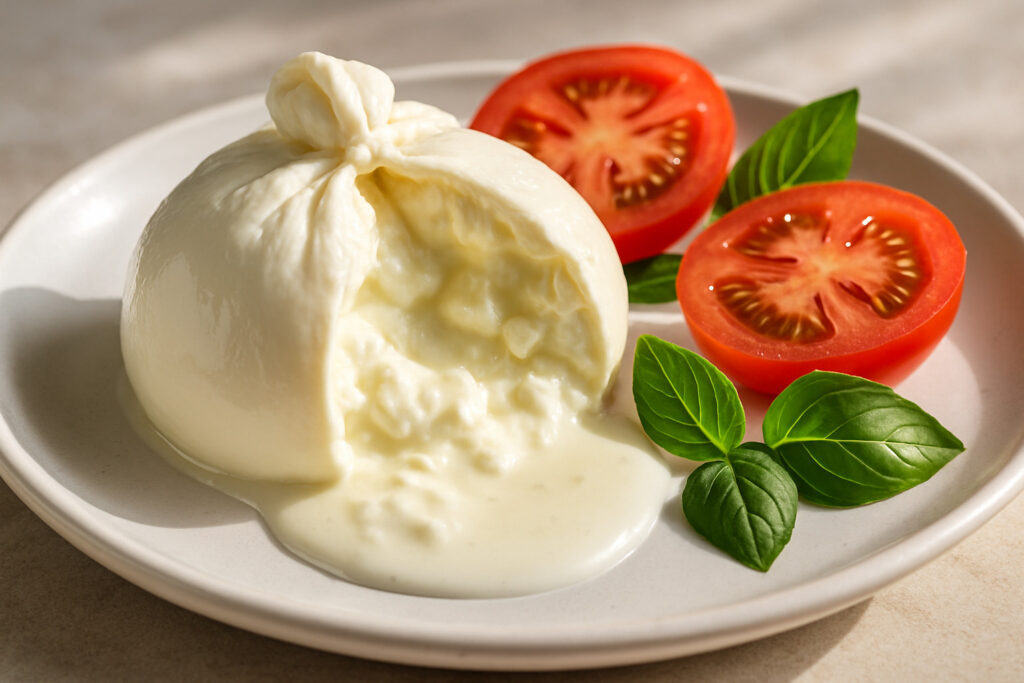




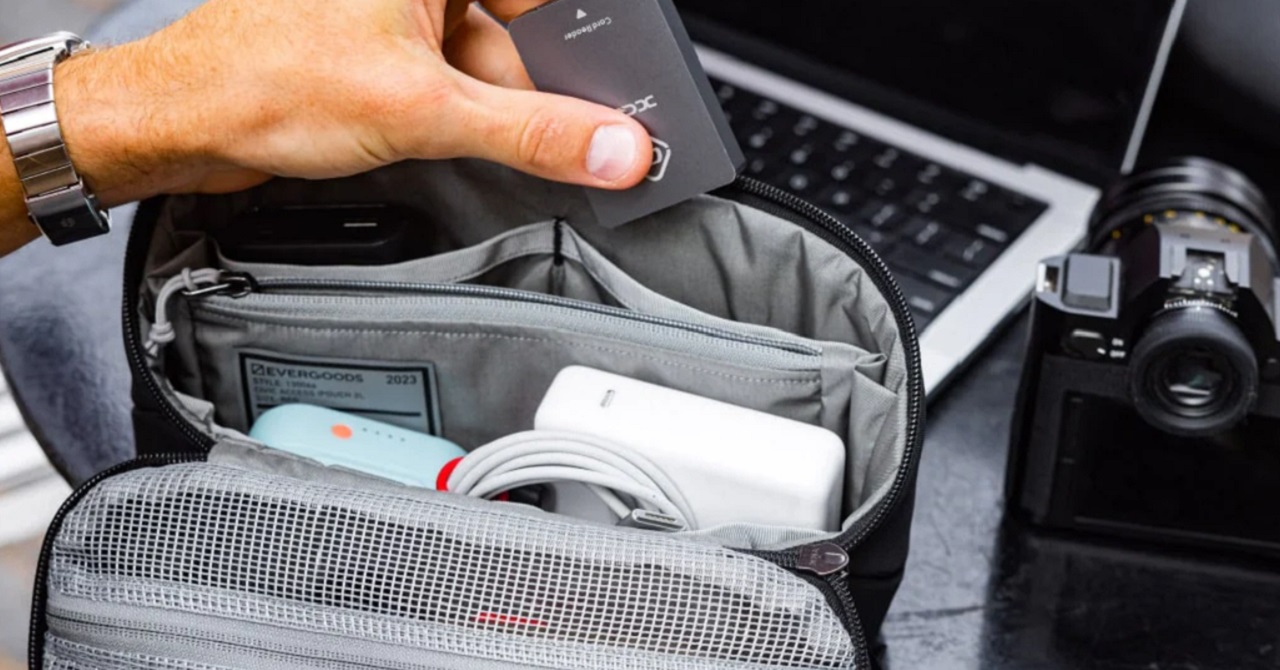

1 thought on “Burrata 101: Everything You Need to Know”
Pingback: Everything You Need to Know About Mortadella - The Dining Destination
Comments are closed.